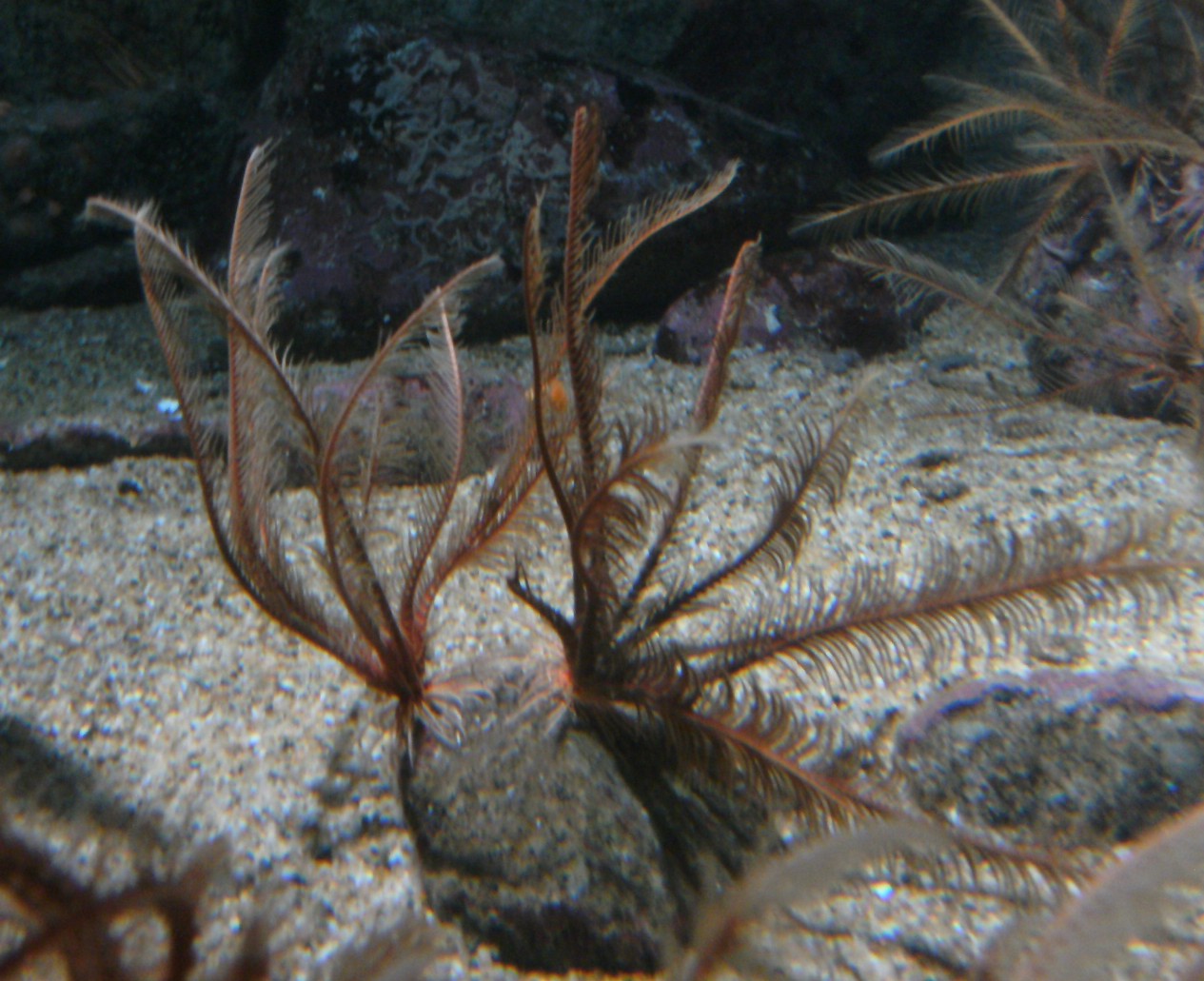Description: Feather stars are echinoderms structured somewhat like an upside-down brittle star. The 5 arms often fork near the base to form a total of 10 or more arm branches which are often around 10 cm long. Jointed appendages called pinnules branch from the side of the arms, giving the featherlike appearance. The upper (oral) surface of the arms has an ambulacral groove, and both the mouth and the anus are on the upper side of the central disk. In feather stars (Order Comatulida), the aboral side of the central disk has clawlike cirri which function somewhat like bird feet to grasp the substrate. Tan to reddish tan. Armspread to 25 cm.
How to Distinguish from Similar Species: This is the only feather star likely to be encountered in our region.
Geographical Range: Northern Alaska to Mexico or farther south to off South America.
Depth Range: 10-1252 m. This species is mostly found in quite deep water but can be found as shallow as 10 m in some restricted localities such as some places in southern British Columbia.
Habitat: Soft and hard bottoms
Biology/Natural
History:
Feather
stars are primarily suspension feeders. They may walk around
using
the cirri or swim if dislodged using the arms. Feather stars
are
deepliving and rarely seen in the Pacific Northwest.
Juveniles are
stalked like the stalked crinoids (sea lilies).
| Return to: | |||
| Main Page | Alphabetic Index | Systematic Index | Glossary |
References:
Dichotomous Keys:Carlton, 2007
Kozloff, 1987, 1996
General References:
Gotshall,
1994
Lamb
and Hanby, 2005
Lambert
and Austin, 2007
Scientific Articles:
Emlet, Richard B., 1994. Body forms and patterns of ciliation in nonfeeding larvae of echinoderms: functional solutions to swimming in the plankton? American Zoologist 34: pp. 570-585
Web sites:
General Notes and Observations: Locations, abundances, unusual behaviors:
Authors and Editors of Page:
Dave Cowles (2010): Created original page
CSS coding for page developed by Jonathan Cowles (2007)
Rosario Invertebrates web site provided courtesy of Walla Walla University
